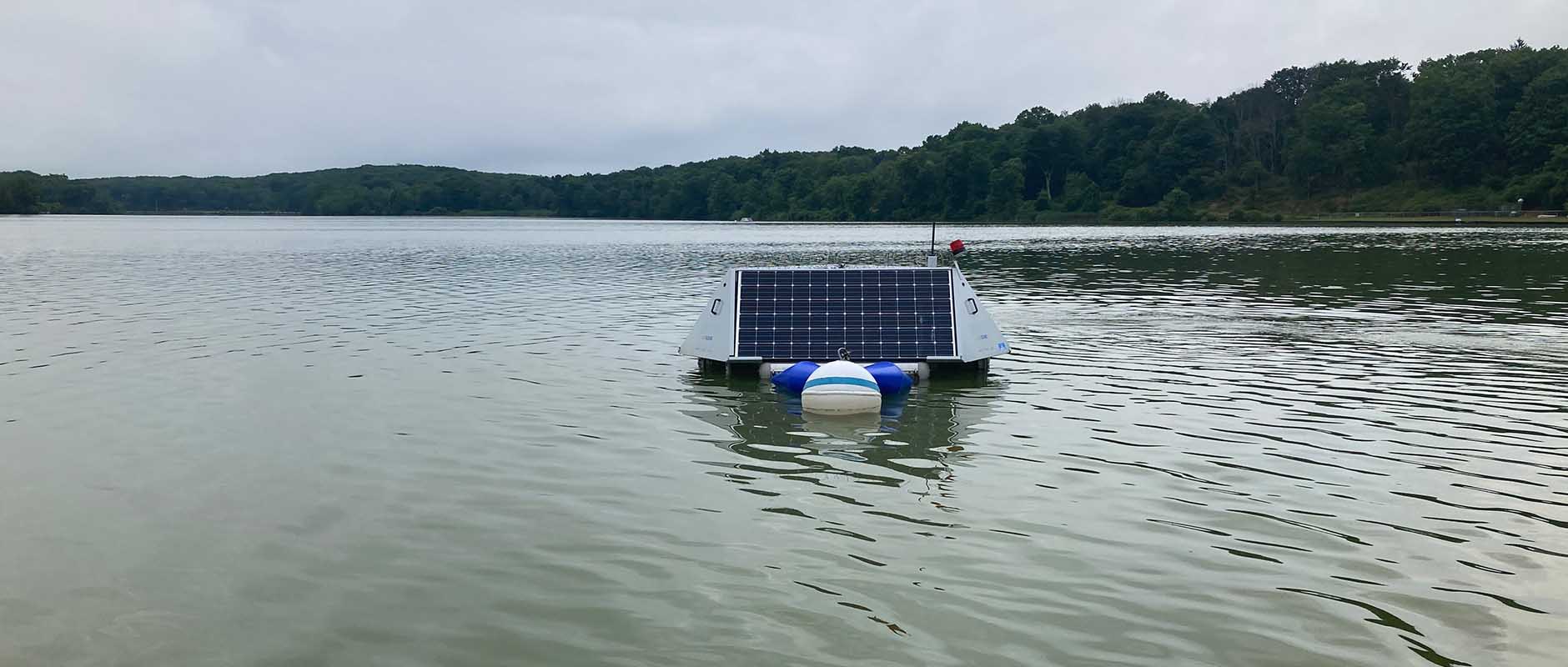
After dealing with Harmful Agal Blooms (HABs) in recent summers, the New York State Parks, Recreation & Historic Preservation decided on a new approach at Lake Welch, applying a new algae prevention strategy. This project covers a 216-acre lake sited in Harriman State Park, New York. Meanwhile, the strategy’s key deployment is the LG Sonic MPC-Buoy, a technology offering proven eco-friendly algal bloom control.
Lake Welch, Harriman State Park’s largest swimming beach, draws thousands of weekend visitors. Here, HABs pose a serious health risk to people and pets. Coming into contact with HABs can lead to vomiting and diarrhea, skin, eye, or throat irritation, and allergic reactions or breathing difficulties.
“State officials considered using a peroxide-based algaecide“, Gabriella Cebada Mora, director of the environmental stewardship and planning division for New York State Parks, Recreation & Historic Preservation, said. “But supply chain issues and the sheer volume of the lake shut down that idea”, she added.
To prevent HABs from invading Lake Welch again next summer, the non-profit engaged LG Sonic to install three ultrasonic buoys in the lake in August 2022. The buoys use the latest innovations in water quality monitoring to monitor and predict algal blooms. As Cebada Mora confirms, this technique is primarily preventative in nature, often used before an algal bloom takes hold.
The sound waves prevent the algae from rising to the water’s surface, preventing their growth—however, this is done without affecting other underwater life. Recent Dutch Water Board commissioned research showed that the LG Sonic’s ultrasound technology does not negatively impact Zooplankton.
Furthermore, the state has recently seen higher nutrient concentrations that feed large algal blooms, according to the Department of Environmental Conservation. Fueled by climate change, HABs are more likely to occur as temperatures rise during summer and early fall. In this way, warmer water allows microscopic organisms to move through more easily, in turn allowing algae to float to the surface more quickly.